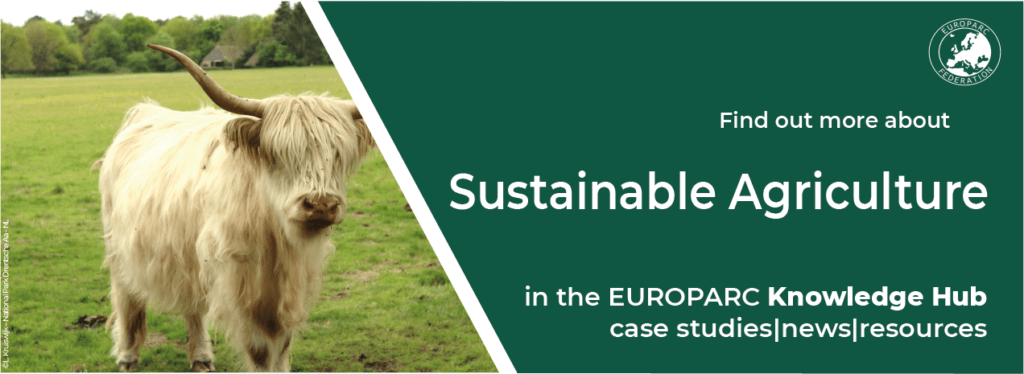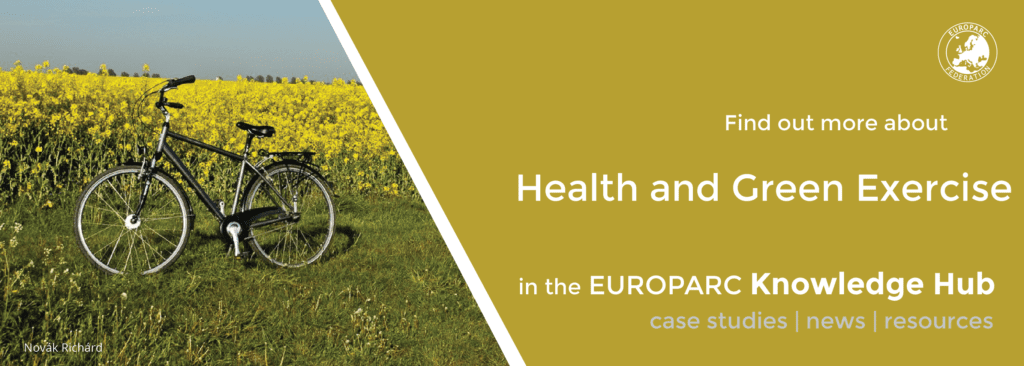The Kullaberg Nature Reserve Youth+ Experience
In the summer of 2022, Kullaberg Nature Reserve invited two groups of Youth+ to stay, work, learn and share their experiences over the course of two three-week periods. These 9 young people came from Austria, Estonia, Italy, Latvia, the Netherlands, Slovenia, Spain and Switzerland – a very international EUROPARC experience!
Article issued by Moritz Mairl
The Kullaberg Nature Reserve Youth+ Experience
Kullaberg Nature Reserve is located on a peninsula in southern Sweden. and is one of the most visited protected areas in Sweden thanks to its unique landscape, rich biodiversity, and cultural history. Over the course of 3 weeks, the two groups of Youth+ were involved in many different aspects of Protected Area management, incorporating all the four pillars of the Youth+ programme into their work: Nature Conservation, Communication, Leadership and Advocacy.
Nature conservation and recreational space are very close to each other in the area. Visitor management therefore plays a very important role in the Protected Area management. Both Youth+ groups spent many days in the sun, rain and wind, collecting visitor surveys which are used to gather important information about possible conflict points between nature conservation and tourist recreation. These data will be incorporated into a long-term visitor management program. Visitor management also included practical work. For example, we extended a hiking trail with wooden planks to keep visitors on the trail and to protect the vegetation.
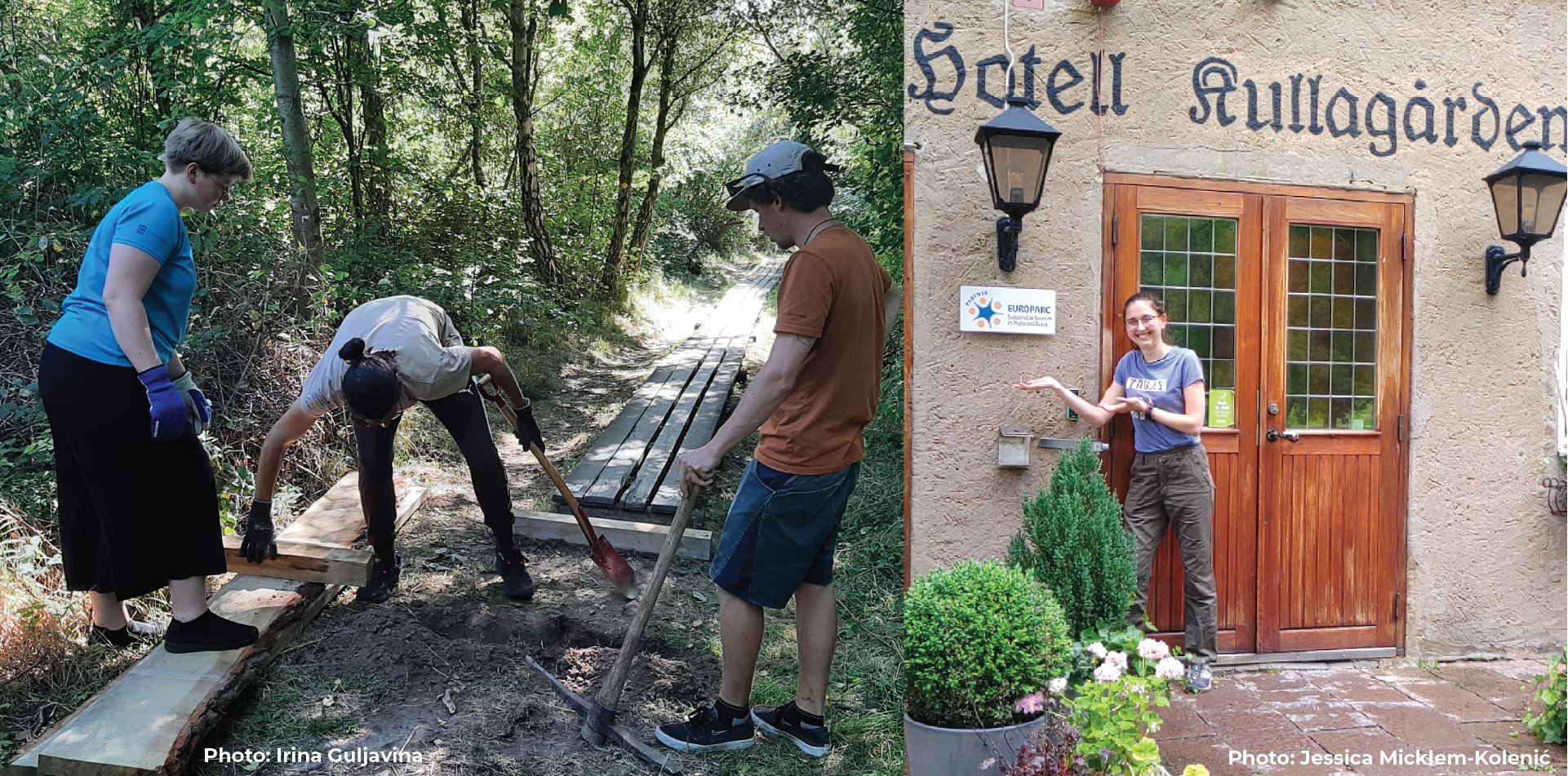
The Youth+ group assisting with trail building and with surveys for the European Charter for Sustainable Tourism
The history of the Nature Reserve is marked by tourism and cultural landscapes. Our meetings with local actors were very informative and brought the history of the region to life. And what better way to talk about the beginnings of the bathing culture in Mölle than during a classic fika (a traditional Swedish coffee and cake break). In the future, the local community plan to be even more involved with the European Charter of Sustainable Tourism, a great way for local businesses and the park to facilitate long-term sustainable development in and around the Protected Area.
While meeting with a local farmer, on the other hand, there was no time for a fika. Sheep had to be unloaded, and the cultural landscape that has been maintained for centuries should continue to be preserved. Even if the work is now only financially viable through subsidies, the cultural heritage is preserved and by working with old native breeds of sheep and cows, the farmer contributes to the promotion of biodiversity. A work that should receive far more recognition and access to financial support.
Nature is also changing in Sweden. Invasive species threaten the native flora and fauna. To curb the problem, the Youth+ assisted with both tangible actions (uprooting invasive plants) and education of the local community and tourists. At the same time, new habitat have been created for rare native species. Due to a lack of deadwood in the forest, bats find it difficult to find enough nesting holes. To counteract this problem, the International Youth+, the local Youth+ and the Kullaberg Junior Rangers have been building some bat houses and installed them in the forest. We hope for numerous inhabitants!
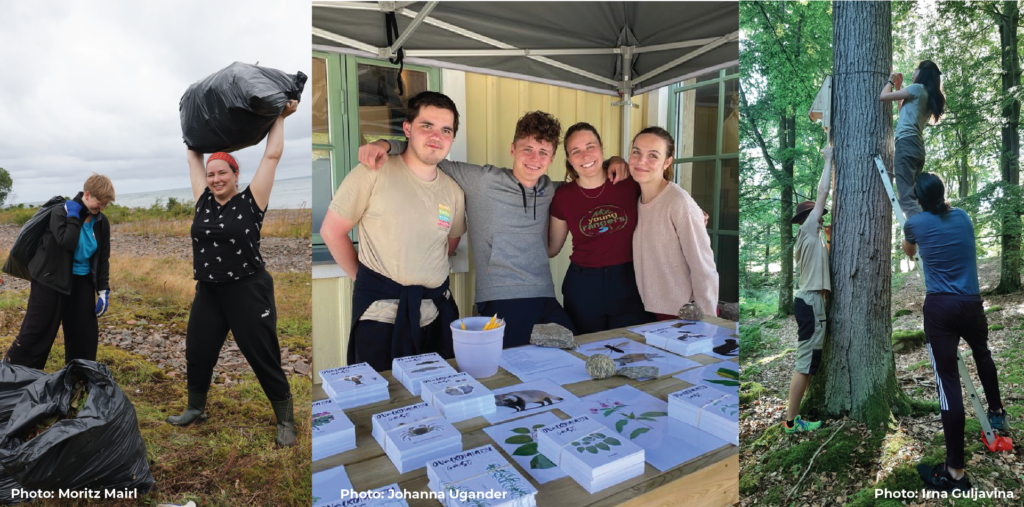
The Youth+ eradicated invasive species, helped raise awareness about their danger to local species, and put up bat houses for conservation.
The Kattegat Strait between Denmark and Sweden is one of the busiest shipping routes in the world. This became very clear when looking out from the lighthouse, the landmark of the nature reserve. Nevertheless, many sea creatures feel extremely comfortable around the peninsula. Lessons about the marine and shoreline life in the area allowed the Youth+ to better understand the biodiversity of the region and experience it first-hand, whether in the Naturum (the visitor centre), while snorkeling or during a Porpoise Safari. Even garbage collecting became an exciting job when you can search for garbage in a kayak or boat along the impressive cliffs!
The Kullaberg Nature Reserve offers enormous diversity in a relatively small area. The participants, each of whom has already gained experience in Protected Areas in their home countries, appreciated this. But what about the young people in the region around the nature reserve? This question was explored in a design thinking workshop.
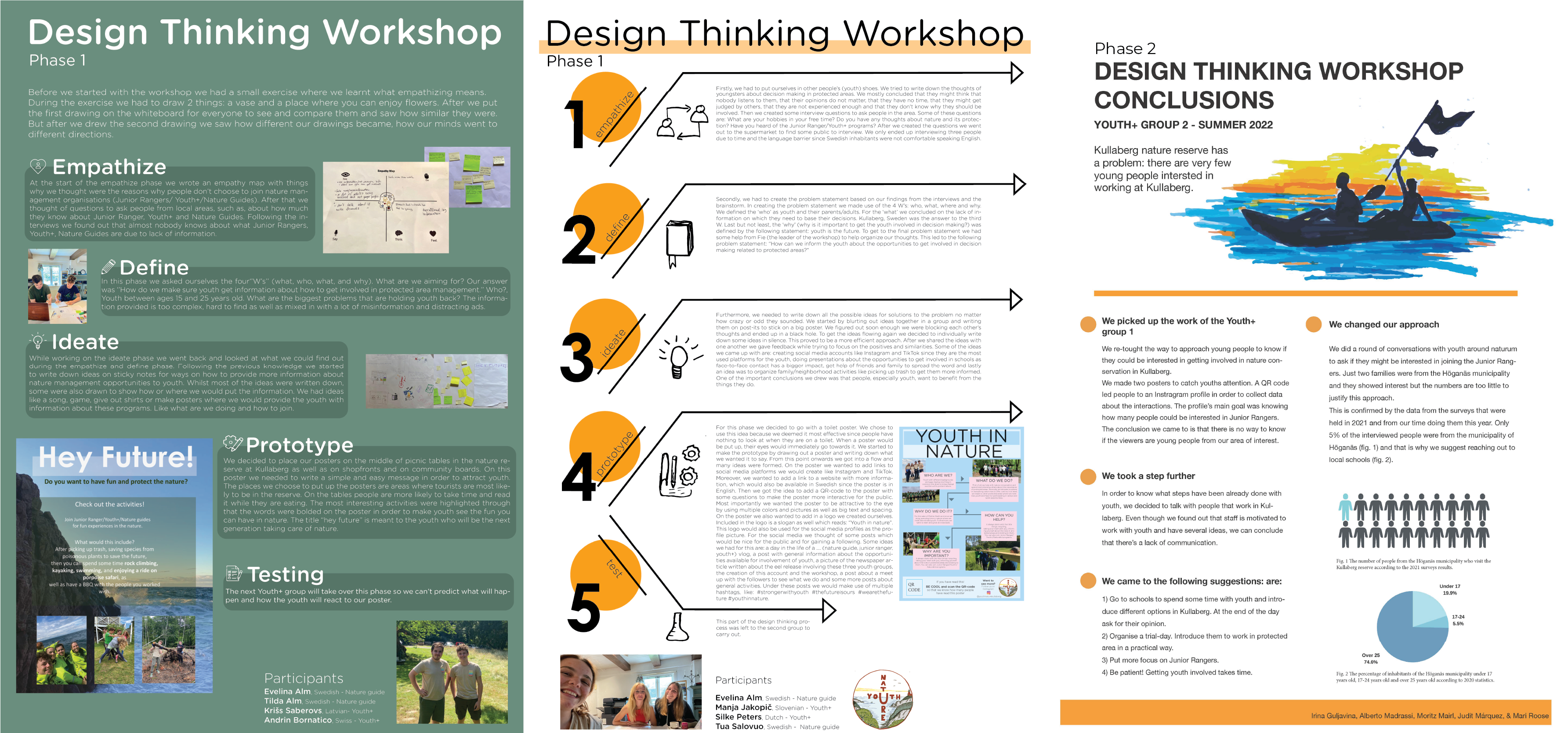
The three posters explaining the Design Thinking Process of Groups 1A, Group 1B (both doing Phase 1) and Group 2 (doing Phase 2)
You can download them here:
Group 1A: Process & Poster
Group 1B: Process & Poster
Group 2: Process & Poster
The Youth+ groups worked together with the local Naturvärdar (a local seasonal youth workers in Kullaberg Nature Reserve), following the design thinking process to evaluate how the Protected area could engage more young people. The first group of Youth+ started the process by interviewing local teenagers and young adults. As a group, problems were recorded, new solution-focused strategies were developed and tested. Posters were used to make young people in the nature preserve aware of what opportunities exist for participation. Interactions with the posters were then tracked on social media using QR codes. The results were evaluated together. Design thinking is a non-linear process that involves setbacks and many questions. For example, the poor interaction with the posters led to some frustration, but also to the development of new solutions and strategies.
The second Youth+ group then continued the design-thinking process to look at how young people can be better reached and what it takes to keep them involved in the park’s work. As an outcome of the workshop, posters and scripts were developed, which present strengths, weaknesses and possible courses of action for Kullaberg Nature Reserve. This should help the management of the reserve to be more active in the field of youth work in the future. Since Kullaberg Nature Reserve is considered the flagship for EUROPARC youth programs in Sweden, in the best case this can have an impact on the whole country!
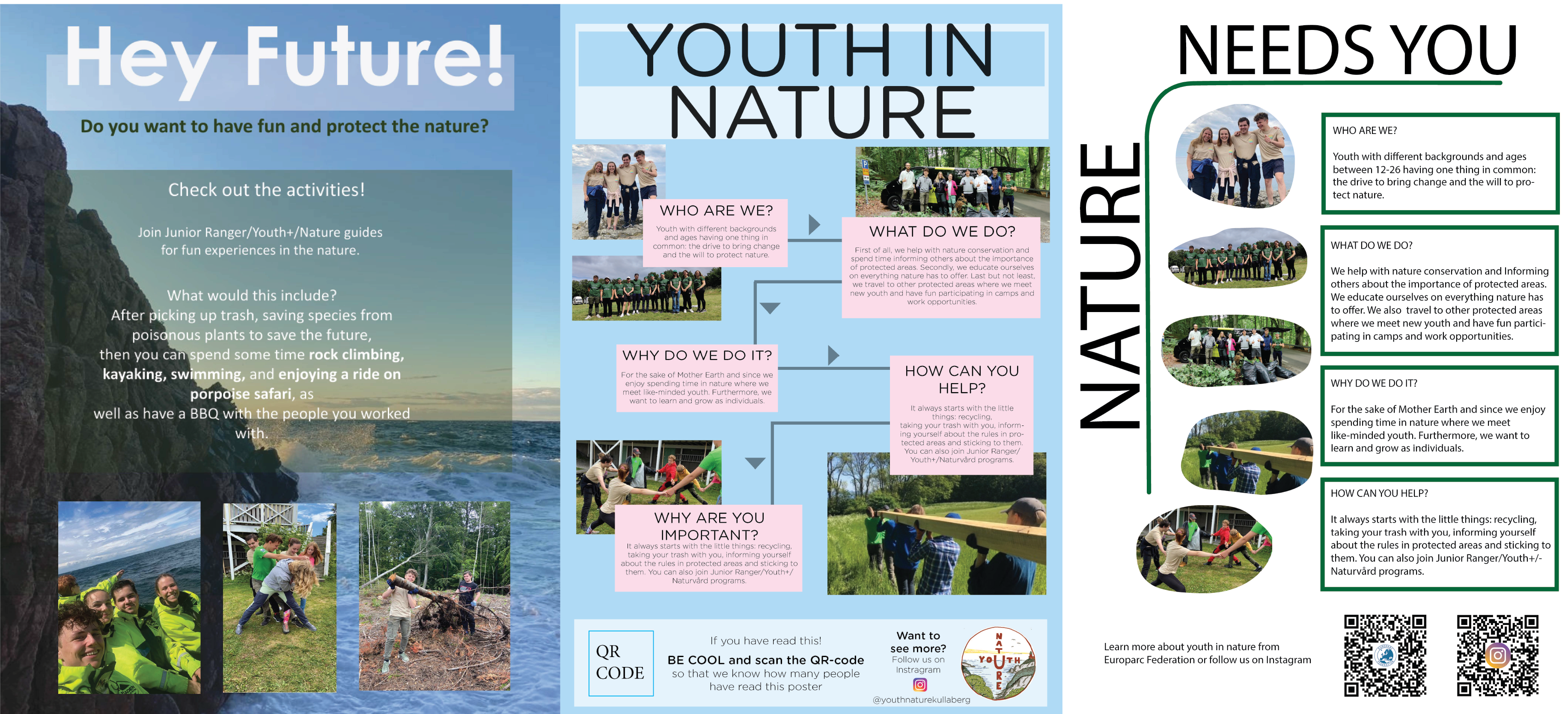
Advertising youth engagement in Kullaberg Nature Reserve
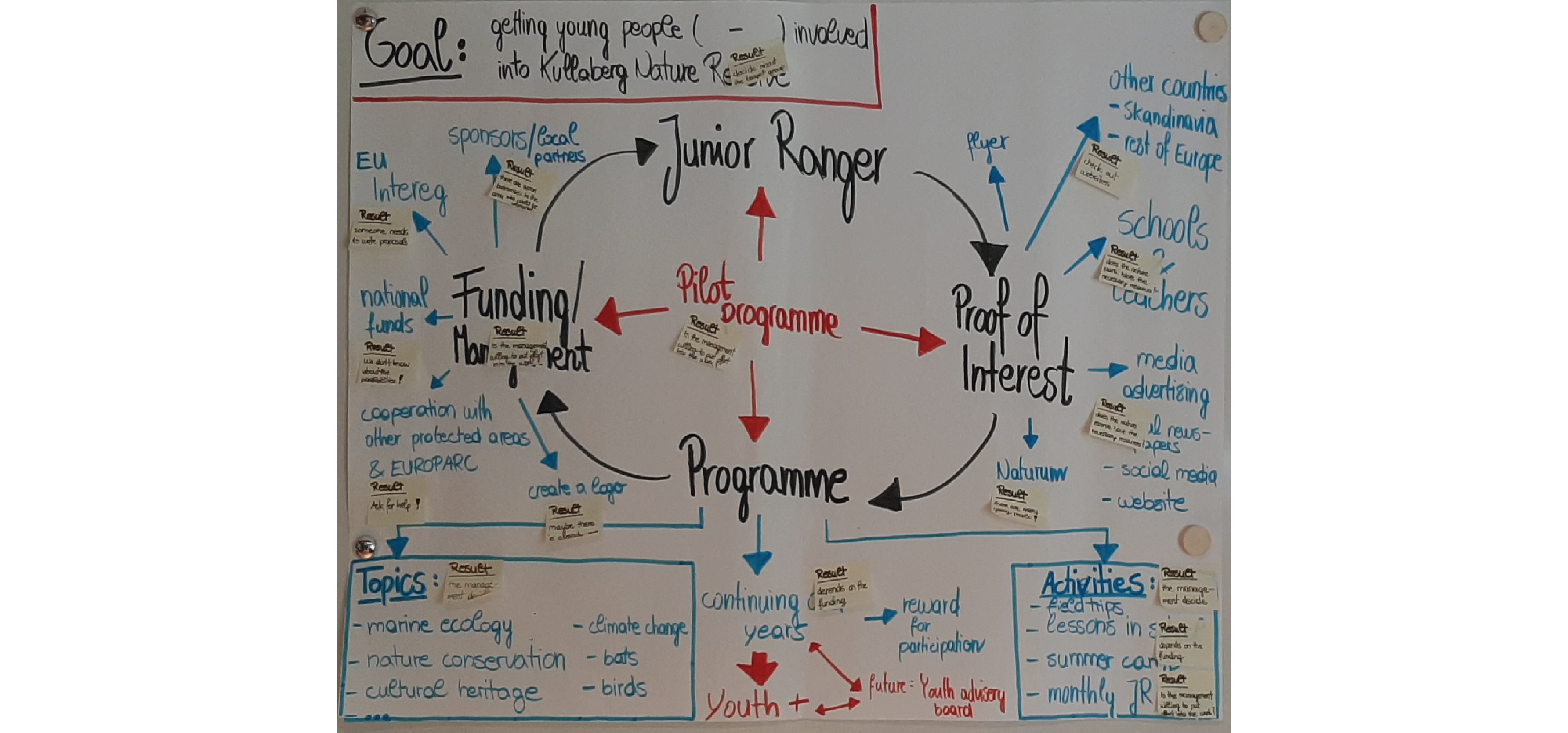
A diagram of the youth involvement process at Kullaberg Nature Reserve
At the end of the three weeks, each of the Youth+ participants prepared a presentation of their home Protected Areain which they had already gained experience. The local staff, Youth+ and Junior Rangers were excited to hear how other Protected Areas were running their Junior Ranger and Youth+ programmes. The audience was eager to travel and experience this first-hand, and plans were made to travel together.
In addition to the insights into the work of the Protected Area, there was also time to get to know Sweden better. Some participants visited Gothenburg, Lund, Malmö, Helsingborg and thanks to the proximity to Denmark also Helsingør. Not only cities, but also the other nature reserves of southern Sweden were explored. The notorious bathing culture became a social event during the early morning swim. To recover from the cold of the sea, the sauna in the accommodation was heated up several times in the evening. The participants also used their free time to better explore the surrounding area. Lonely bays, breathtaking sunsets and jumping tunas were among the absolute highlights here. Barbecue evenings, cooking together (seaweed pasta, köttbullar and much more), a crayfish party, movie nights and karaoke swore the participants together to a team and made the time in Sweden fly by and new friendships developed. Nobody will forget this great time so quickly!
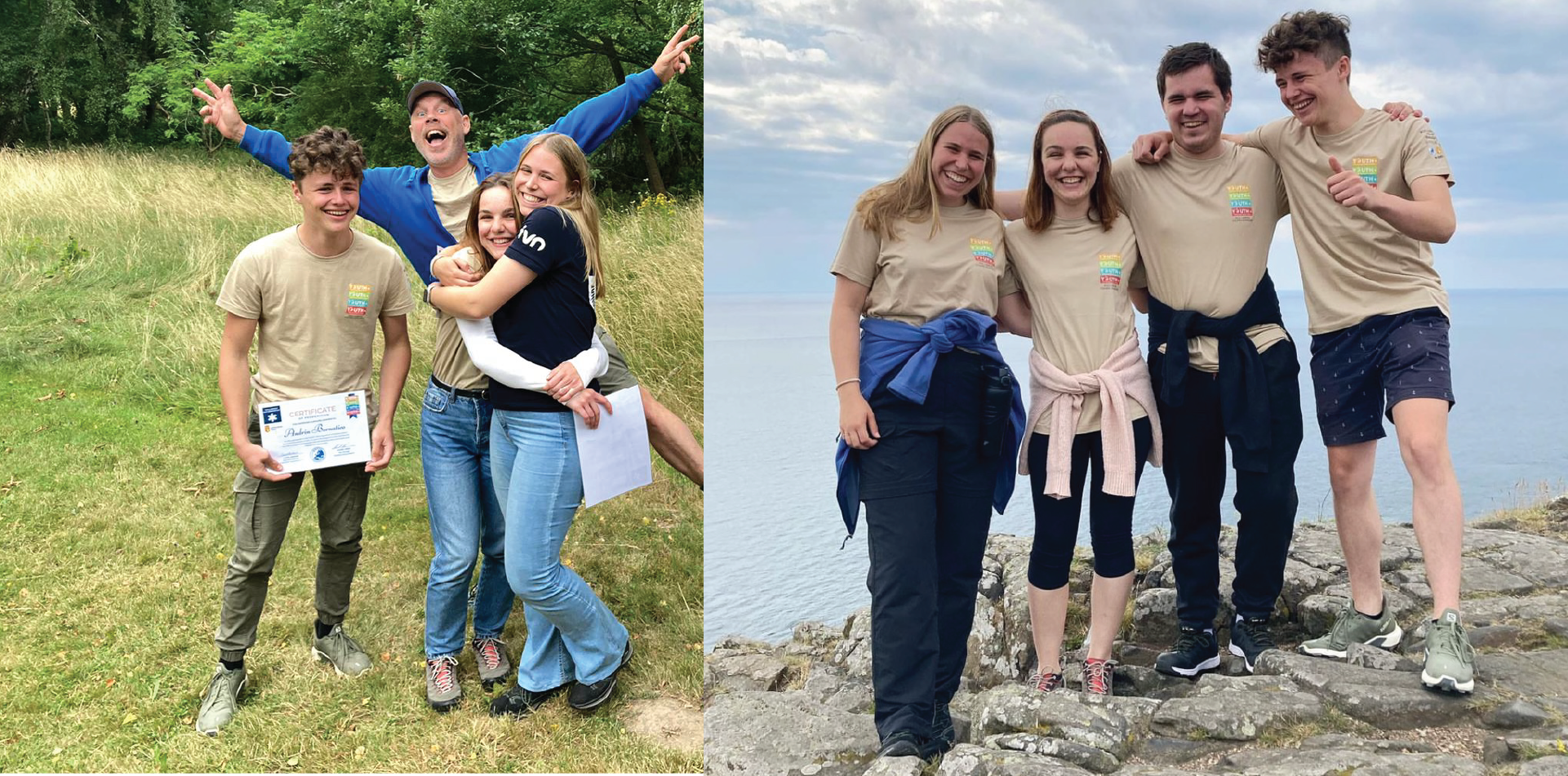
The first group: Silke Peters (NL), Manja Jakopič (SI), Krišs Atvars Saberovs (LV), and Andrin Bornatico (CH)
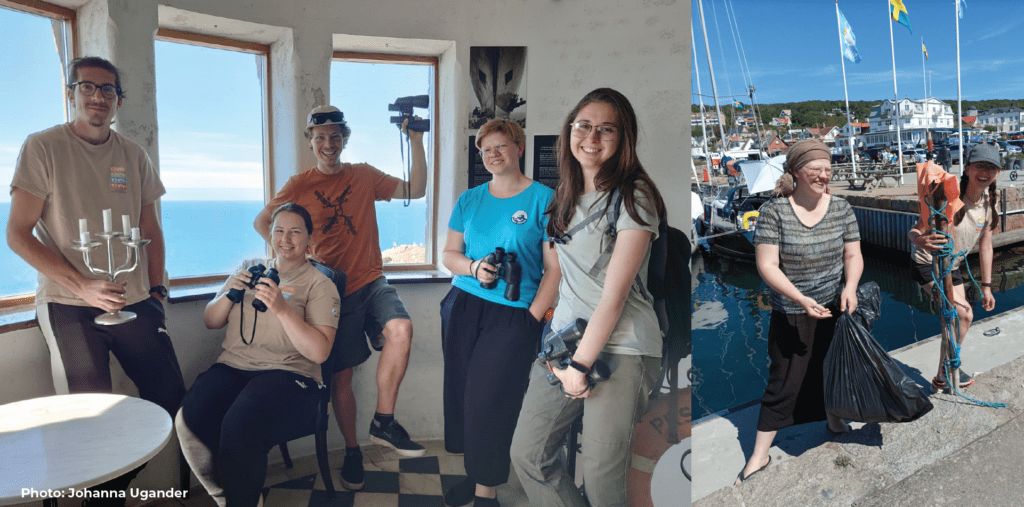
The second group: Alberto Madrassi (IT), Irina Guljavina (EE), Moritz Mairl (IT/AT), Mari Roose (EE), and Judit Márquez Pérez (ES),
This work was supported by:

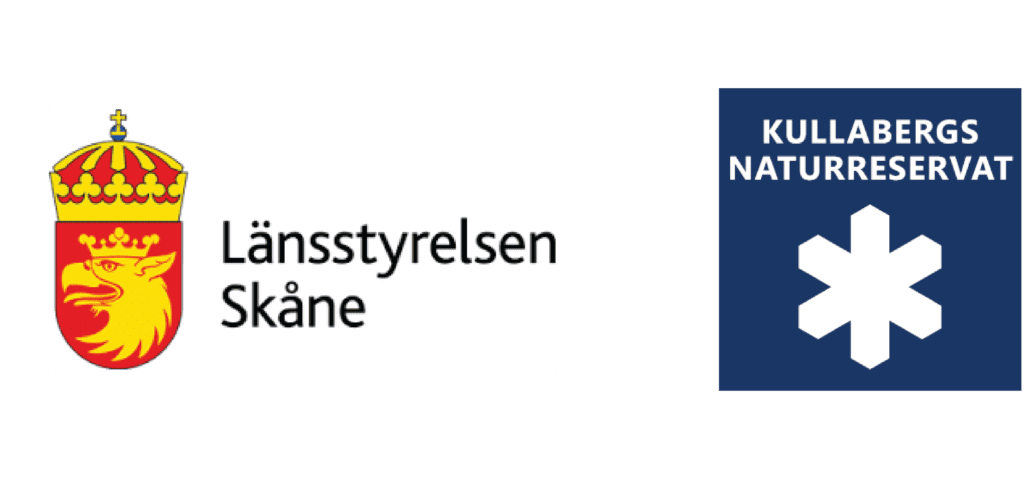
Cooperating for Biodiversity: the case of Schiermonnikoog in the Netherlands
In the Netherlands, farmers are protesting the government’s plans to cut nitrogen emissions. This article details the innovative plan created by farmers at Schiermonnikoog that will cut emissions, whilst ensuring the farmers’ livelihoods.
The Nitrogen problem
Agriculture is essential to support human life, but it can also be destructive to nature when practised too intensely. Cattle produced manure, as well as fertilizers, emit high levels of greenhouse gases, amongst which nitrogen. This calls for legislation, policies, and most of all, collaboration, amongst the parties involved to work together toward a more sustainable way of farming. EUROPARC believes that only in working together with farmers, we can reach long-term, sustainable solutions that are Good for People and Good for Nature.
The Netherlands, like other EU countries, is required to protect nature. This pertains especially to the protection of the 162 Natura 2000 areas in the country. For years, the expulsion of nitrogen in The Netherlands has been too high, resulting in damaged and vulnerable nature.
40% of the nitrogen affecting Natura 2000 areas comes from the agricultural sector. This is because of the high amount of cattle in relation to the amount of square meters. The steps undertaken to actively battle the problem have only had limited effects so far. In order to reach the climate goals by 2030, the government plans aim to reduce greenhouse gas nitrogen by 70 percent, mainly in farming areas close to nature reserves. Now, it is clear that in order to drastically reduce the nitrogen output, the amount of cattle in the Netherlands will need to be reduced as well. This poses the question:
Is there a way for farmers and the government to work together towards what is, in the end, a shared goal?
The Schiermonnikoog Island case study detailed here is doing just that.
Cooperating for Biodiversity: the case of Schiermonnikoog in the Netherlands
In the Dutch Waddensea, on the Island of Schiermonnikoog, there are seven dairy farmers. Almost the entire island is designated as a National Park.
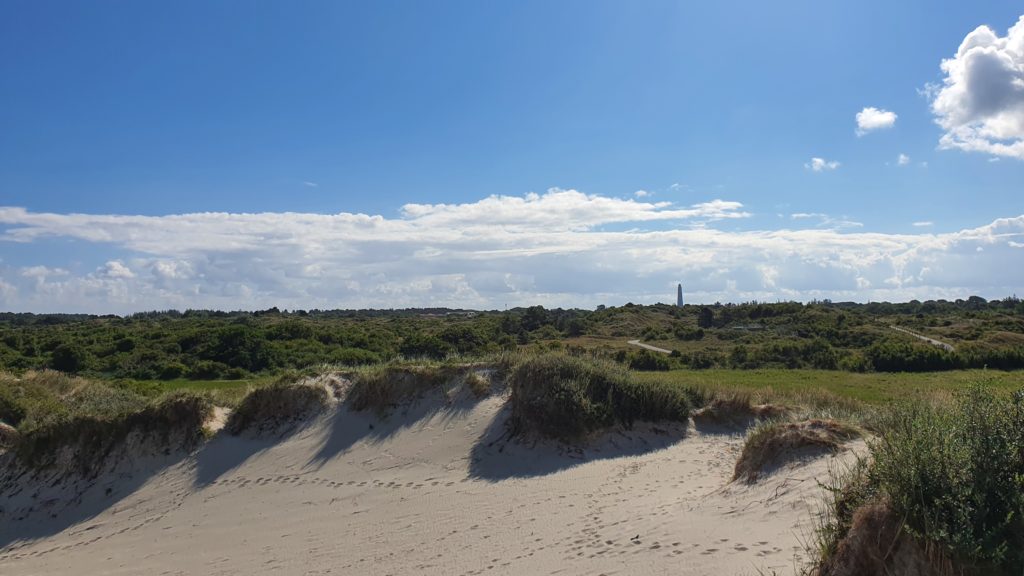
Dune Area at Schiermonnikoog Island © Esther Bossink, EUROPARC
According to the Natura 2000 Schiermonnikoog Management Plan, the nitrogen emissions from agriculture on the vulnerable dunes of Schiermonnikoog are too high. The Dutch government has taken measures by issuing a nitrogen legislation that will mean drastic changes for the agricultural sector. Initially, the province planned to buy farmers out.
As former EUROPARC Intern Lisanne Kruiswijk mentions in her report “From production and protection paradigms to a landscape approach”, the farmers opposed to this idea. Instead, they came up with a collaborative plan. A solution through which the seven dairy farmers of the island would implement nature-promoting measures, including a voluntary decline in the number of cows by no less than 35%.
The pillars of the project
The main goal of the project is the realization of biodiverse agriculture on the island. Together with Natuurmonumenten and other parties, the dairy farmers have drawn up a joint target for 2030. The three pillars on which the project stands are:
1. The realization of biodiverse agriculture on the island: Measures will be implemented to make agriculture on the island more biodiverse, such as strip cultivation, healthier soil life and a substantial reduction in livestock.
2. Producing and selling own dairy products from the Island: The loss of income due to the downsizing of the livestock of cows will be compensated by the creation of a cheese factory on the island, and selling island cheese products.
3. Residual flows: The farmers take care of the residual flows that agricultural production entails. For example, farmers are investigating how best to deal with matters such as:
- Grass clippings from the salt marsh
- Verge clippings
- Cleaning the locks
- Whey from future cheese production
- Solid manure
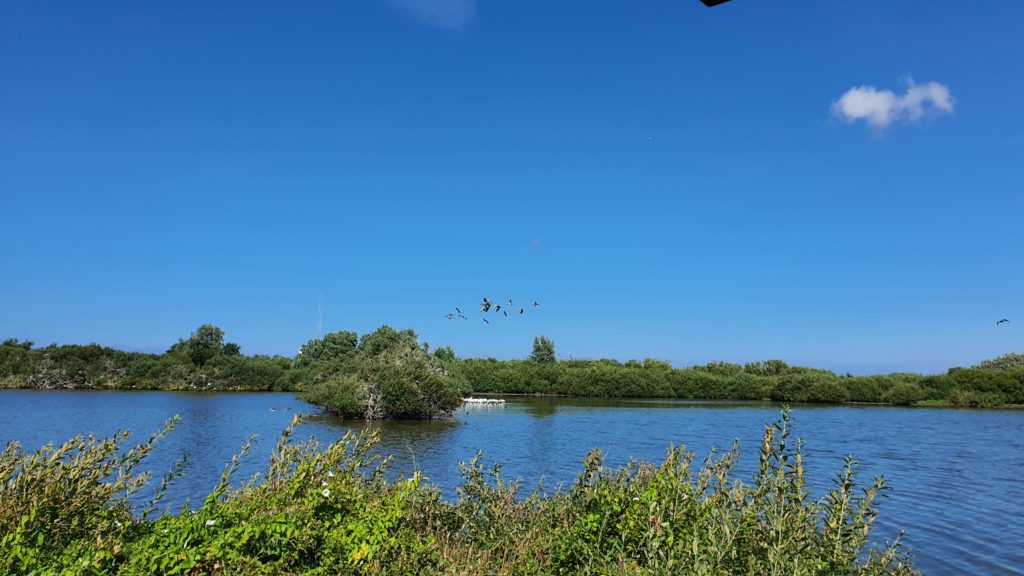
Westerplas at Schiermonnikoog, an important resting place for birds © Esther Bossink, EUROPARC.
The project is financially supported partially by the state, and a big push comes also from the European CAP pilot, in the framework of the agricultural European Innovation Partnership (EIP-AGRI).
Takeaways
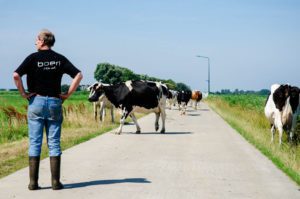
Farmer with cows in Schiermonnikoog
On Schiermonnikoog the farmers are working closely with the government and the business community, such as the Louis Bolk Institute, Ministry of Agriculture, Nature and Food Safety, Provincie Fryslân, Gemeente Schiermonnikoog, D&U Advies, Rabobank, Natuurmonumenten and FrieslandCampina.
Cooperation and collaboration are key to protecting both farmers’ and nature’s interests, and in this case, the location and setup of the island, where stakeholders are highly dependent on one another, played a significant role.
The way forward
This is a great example of a collaborative approach that could be implemented elsewhere. Whilst, there are still roadblocks to tackle, the work on Schiermonnikoog can be seen as “flagship” project on collaboration between farmers, nature managers, private companies and governmental institutions. It reminds us once again that
Alone you go faster, together you go further
Read the full case study here.
EUROPARC’s family keeps growing…check out our new members!
Get to know these 4 new members from Bulgaria, Croatia, Spain, and Switzerland who recently joined the EUROPARC network. Welcome!
BULGARIA
National Protected Areas Control Agency
This new organization was created to assist government institutions and NGO’s in providing active control and monitoring of Bulgaria’s Protected Areas, biodiversity, and ensuring the sustainable use of natural resources. The agency trains mountain rangers and mountain patrols and runs a big training facility in the Balkan Mountains near Sofia, Bulgaria.
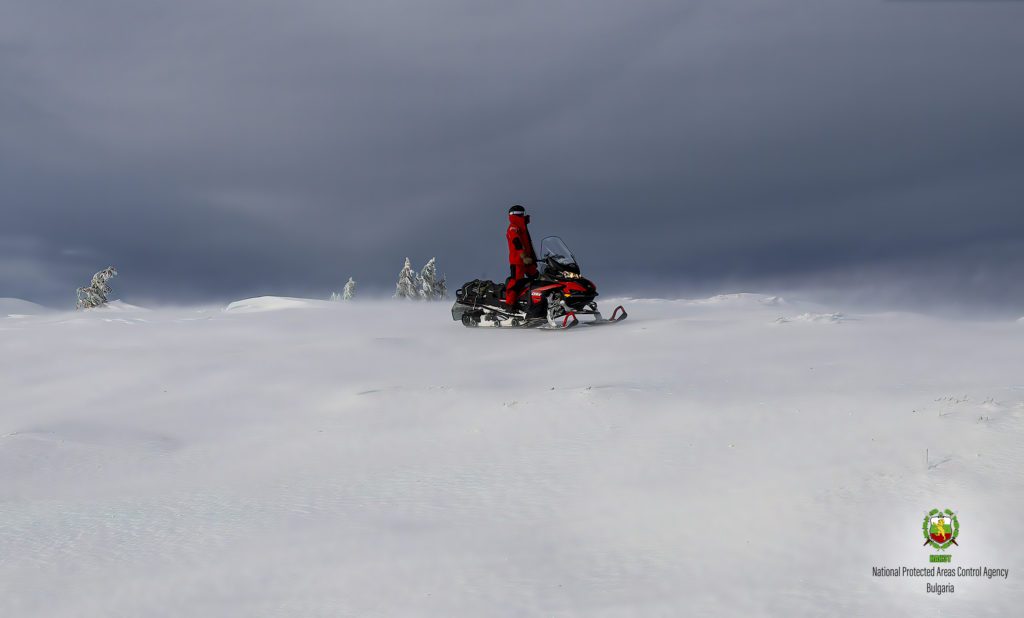
@Nikolai Zlatkov. Mountain ranger on winter patrol, on the main Balkan ridge, 2200 meters altitude, “Zapadna Starat Planina” Protected Area, Bulgaria.
CROATIA
Public Institution Nature of Šibenik – Knin County
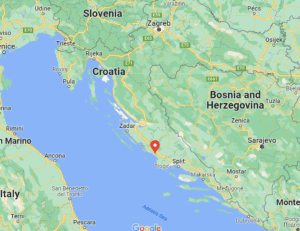
Institution location
The Public Institution Nature of the Šibenik-Knin County was established in 2007.
The primary objective of the organisation is to protect, maintain and preserve the authenticity of the natural environment and to ensure the sustainable use of natural and cultural goods in six designated sites, one nature monument and nearly sixty Natura 2000 areas. In its management area, there is also St Nicholas’ Fortress, a cultural and historical monument under UNESCO protection.
These areas burst with diversified and unique flora and fauna as well as exceptional geomorphological heritage.
SPAIN
Starlight Stellar Park Camino Barranco de Badajoz

Park location
The Parque Estelar Starlight Camino Barranco de Badajoz is located within the Reserva Natural del Cielo y la Tierra (Heaven and Earth Nature Reserve) in the Güímar valley, Tenerife, Spain. Certified by the Starlight Foundation, it is the first astronomical park in the Canary Islands, where activities are organised to observe the night sky, lunar craters, sunspots, and astronomical events.
The Park also organises excursions to the Barranco de Badajoz and the Caserío de San Juan, with the aim to preserve the natural and cultural heritage, by raising awareness about nature, tradition, culture, and customs of our ancestors.
Our mission is to Protect, Conserve and Preserve Nature, to ensure a legacy for present and future generations and to guarantee that all of the resources we have received are returned to Nature.
SWITZERLAND
Greifensee-Foundation
As an NGO, the Greifensee Foundation is committed to the preservation and further development of the Greifensee landscape and manages the associated nature reserve on behalf of the Canton of Zurich. The rangers control and supervise compliance with the protection ordinances at Lake Greifensee and inform visitors about the Protected Area. The Greifensee Foundation also runs the Silberweide Nature Station and the Junior Ranger and Young Ranger Programme.

Der See im Sommer, Greifensee-Stiftung, Switzerland
The Greifensee is the largest Protected Area in the canton of Zurich and has been a national water and migratory bird reserve since 2009. Thanks to the undeveloped banks, reed belts, fens and reed meadows have been preserved.
Would you like to be part of the biggest network of Protected Areas in Europe?
Read all about it on this page.
UN make a decisive move on Right to a Healthy Environment
Scarpe escaut Nature Regional Park, France © Samuel Dhote
On 28 July, the UN General Assembly (UNGA) recognized a clean, healthy and sustainable environment as a universal human right.
What is the declaration?
This UNGA declaration states that everyone has a right to a healthy environment. This includes clean air and water, as well as a stable climate.
As the UNGA is the UN’s only forum with representation of all its 193 Member States, this resolution is historic.
Inger Andersen, the Executive Director of the UN Environment Programme (UNEP) declared:
The resolution will trigger environmental action and provide necessary safeguards to people all over the world. It will help people stand up for their right to breathe clean air, to access safe and sufficient water, healthy food, healthy ecosystems, and non-toxic environments to live, work, study, and play.
What does it mean?
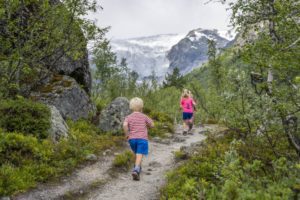
Bergsetbreen Glacier, Norway. Photo Vegard Aasen
Though not legally binding, this resolution paves the way for an acceleration toward the goal of an inclusive, green recovery. How? For instance, by incorporating the right to a healthy environment into national constitutions. People could then use national human rights law against environmentally destructive policies.
EUROPARC welcomes this normative development and reaffirms its commitment to human rights. As the representative voice of Protected Areas in Europe, we have long advocated for a healthy nature, to support a healthy society.
What is EUROPARC doing?
On the advocacy side, EUROPARC became the chair of the Environment, Climate Change, Heritage and Health Committee (ECCH&H) at the Conference of INGOs at the Council of Europe last year. The objective of this Committee is that:
human rights of European citizens are upheld with respect to the impacts of climate change, biodiversity loss and the connection between people and natural and cultural heritage.
The UN resolution further legitimises this important work.
EUROPARC invests energy and resources on several initiatives for Protected Areas, focusing on topics such as climate change adaptation, youth or health & nature, just to name a few.
Michael Hošek EUROPARC Federation President stated:
This welcome declaration will be an impetus to ensure people have access to a clean and safe environment, not only close to where they live, but in the nature that surrounds them. Protected Areas already give millions of Europeans access to a “clean, healthy and sustainable environment” and we need to ensure our parks are valued and invested in, to secure these nature and health benefits.
What can your Protected Area do?
Healthy Parks make Healthy People and are well suited to lead us into a green future – EUROPARC is there to support in this pathway.
The right access to a “clean, healthy and sustainable environment” is important to us all, so:
- If you want to know more
- If you want to contribute
Then, have a look at our resources on Climate Change Adaptation, join the different EUROPARC initiatives, like Healthy Parks Healthy People Europe or the programmes for Young People in Protected Areas.
Share your knowledge through any of our initiatives!
Together, we can create the green and healthy future of tomorrow.
